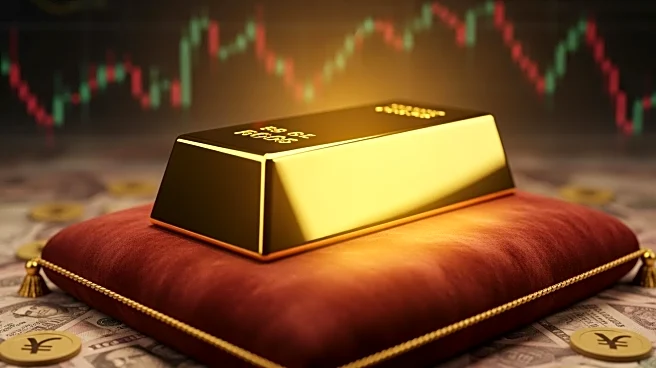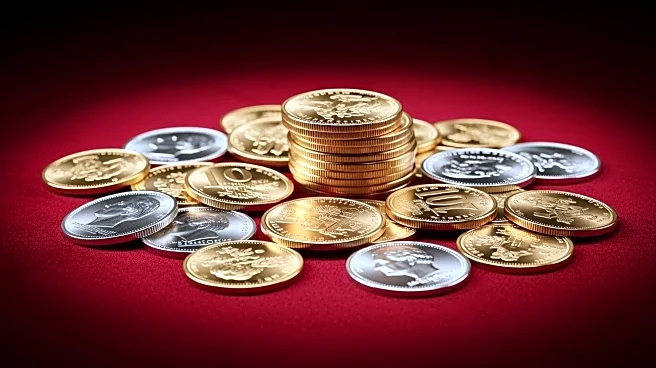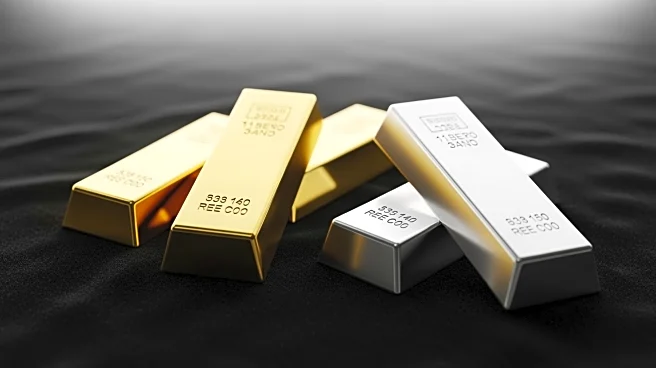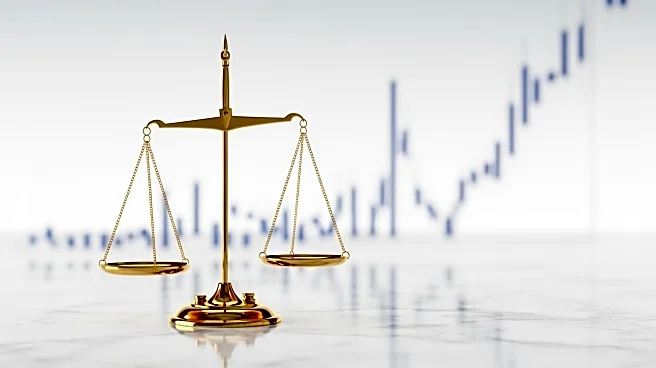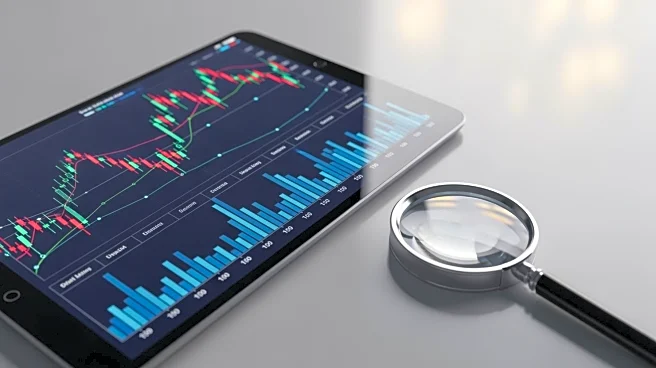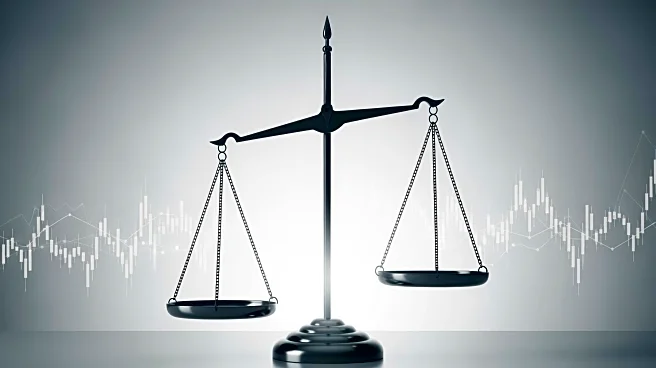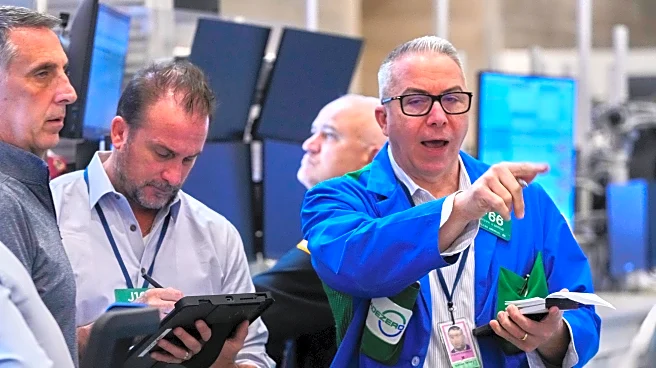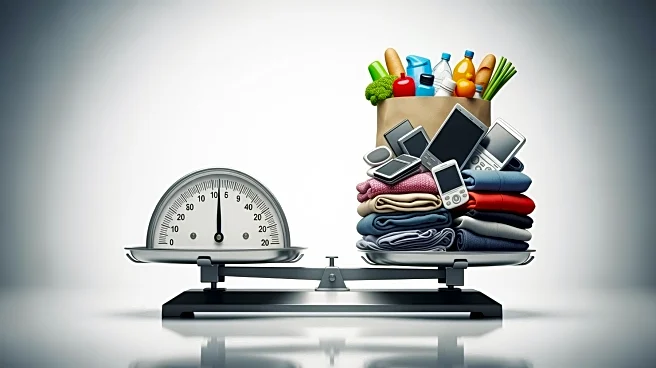What's Happening?
Metals Focus, a precious metals consultancy, has released its latest 'Precious Metals Investment Focus' report for 2025/26, forecasting a significant rise in gold prices. The report predicts that gold will
reach $5,000 per ounce in 2026, driven by ongoing uncertainty in U.S. trade policy, a weaker dollar, and declining real interest rates. The consultancy highlights that geopolitical tensions and continued official sector buying will further support investor demand for gold. Additionally, silver is expected to benefit from similar drivers, with prices potentially breaking above $60 per ounce. Platinum and palladium are also experiencing strong market conditions, with platinum prices expected to average $1,670 per ounce, marking a 34% year-on-year increase. Palladium is projected to see a 20% price increase, reaching an average of $1,340 per ounce.
Why It's Important?
The anticipated rise in gold prices reflects broader economic and geopolitical uncertainties that are influencing investor behavior. As a safe-haven asset, gold is often sought after during times of economic instability, making it a critical indicator of market sentiment. The forecasted increase in gold prices could have significant implications for investors, central banks, and industries reliant on precious metals. The U.S. economy, in particular, faces challenges such as potential stagflation, persistent fiscal deficits, and questions about the sustainability of the national debt. These factors contribute to the attractiveness of gold as a hedge against inflation and currency devaluation. The report underscores the importance of precious metals in diversifying investment portfolios and managing risk in uncertain economic climates.
What's Next?
Looking ahead, the precious metals market is expected to remain robust, with continued interest from investors seeking stability amid policy uncertainty and geopolitical risks. The potential for further trade disruptions and economic challenges could sustain high demand for gold and other precious metals. Market participants will likely monitor developments in U.S. trade policy, interest rate decisions, and fiscal policies, as these factors will influence the trajectory of precious metal prices. Additionally, the role of central banks as net buyers of gold will be crucial in shaping market dynamics. As the global economic landscape evolves, the precious metals market is poised for another strong year, with gold leading the charge.
Beyond the Headlines
The projected rise in gold prices highlights deeper concerns about the long-term sustainability of the U.S. economy and the dollar's role as a global reserve currency. With mounting fiscal deficits and rapid debt accumulation, questions about the independence of the Federal Reserve and the future of U.S. monetary policy are becoming more pronounced. These issues could lead to a reevaluation of the dollar's dominance in international finance, potentially increasing the strategic importance of gold as a reserve asset. The report also suggests that the precious metals market may experience increased volatility, driven by speculative inflows and shifting investor sentiment.
